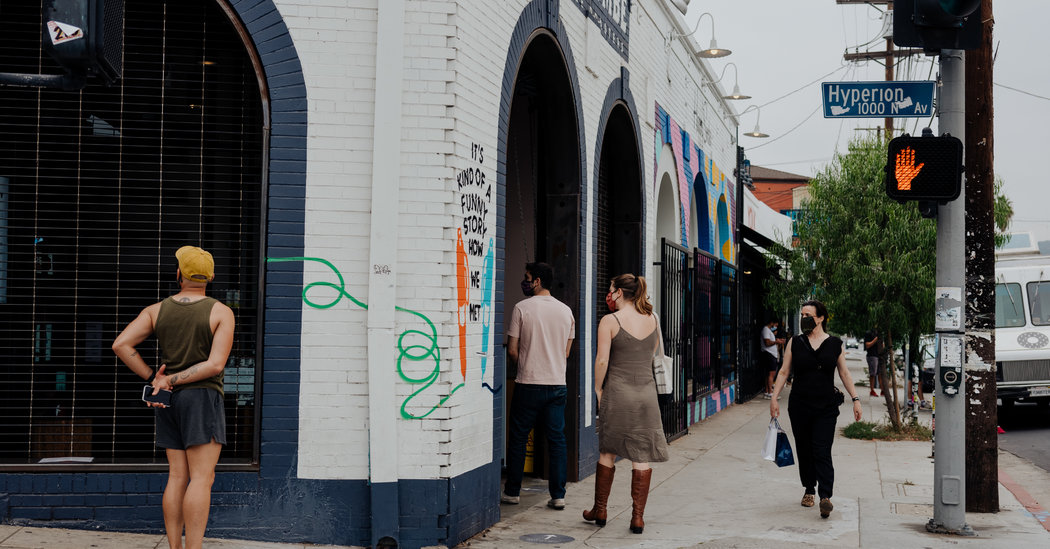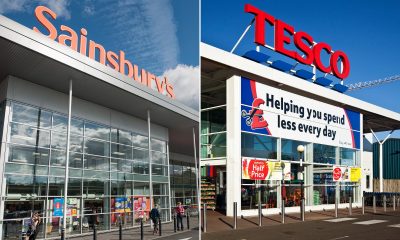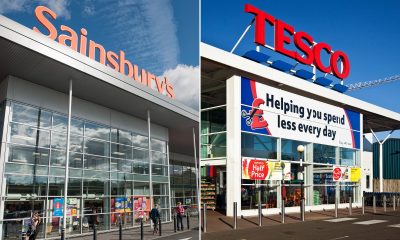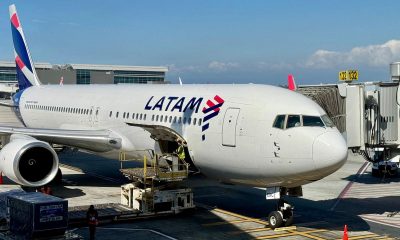ECONOMIC NEWS
A Coffee Chain Reveals Flaws in the Fed’s Plan to Save Main Street
WASHINGTON — La Colombe, a Philadelphia-based purveyor of fancy coffee and canned draft lattes, has seen its business fall off sharply in 2020 as the coronavirus pandemic shuttered its cafes and closed the upscale restaurants that serve its brew. But the company has fallen through the cracks when it comes to government relief.La Colombe didn’t think it qualified for the government’s forgivable small-business loan program given its size and canned coffee manufacturing business. It is too small to have ready access to the debt markets big companies use to raise funds — markets that are chugging along with the help of Federal Reserve backstops.The company’s leaders thought that another Fed program, one intended to help midsize businesses by providing loans, would be their best shot at getting help. But when the central bank announced the details in early April, it was clear that La Colombe would not qualify. The company has too much debt relative to earnings to meet the Fed’s leverage restrictions.“That just doesn’t make sense for companies like La Colombe, because we’re growing so quickly,” said Aren Platt, who leads special projects for the company.The Fed’s Main Street loan program for medium businesses was destined to be a challenge. The central bank had never tried lending to midsize companies before, and it is difficult to help a very diverse group of businesses without putting taxpayer money at risk. The Fed, the Treasury Department and members of Congress have also at times appeared to be on different pages about what they want the program to achieve.The central bank and the Treasury, which is providing money to cover any loans that go bad, spent months devising the program, negotiating over credit risk and vetting terms. Many officials within the Fed wanted to create a program that businesses would actually use, but some at Treasury saw the program as more of an absolute backstop for firms that were out of options. Steven Mnuchin, the Treasury secretary, has resisted taking on too much risk, saying at one point that he did not want to lose money on the programs as a base case.What has emerged after three months, two overhauls and more than 2,000 comments filed with the Fed is a program that seems to be incapable of pleasing much of anyone.First announced on March 23, the Main Street program finally allowed banks to register as lenders in mid-June — but only about 450 of the nation’s thousands of eligible banks have registered so far. Banks have reported that many clients are not interested in using the program, the Fed chair, Jerome H. Powell, acknowledged to concerned lawmakers during testimony in late June.Small-town bankers say some clients have gotten spooked by the substantial paperwork involved in using the program. Big companies often have more attractive options elsewhere in the market. Some, like La Colombe, have too much debt to apply. That problem is echoed across the comment letters by companies that were expanding their footprint pre-pandemic.It will be hard to declare the program an outright failure even if few companies use it, because the Fed and Treasury have set out limited — and often fuzzy — goals. Officials say that they want to give healthy companies an option for credit access if market conditions worsen, but want to be responsible with the loans they make.“Success would be that we have broad national coverage,” said Eric Rosengren, president of the Federal Reserve Bank of Boston, which is overseeing the effort. “This is for businesses that have a good business model, that were disrupted by the pandemic, and that are going to be able to recover from that so that they will be able to pay off the loan.”The program is intended to help a narrow set of companies, particularly given its strict terms, experts said.The Fed takes on 95 percent of the risk, but banks have to retain 5 percent of any loan they underwrite through the Main Street program, a stipulation meant to discourage them from dumping bad debt on the Fed. Because they must have “skin in the game,” they are likely to avoid underwriting loans if the economy is in crisis and it looks like a big chunk of borrowers might default.The program also comes with reporting requirements and other restrictions — including limitations on executive pay and capital distributions, like dividends, that Congress set out in the relief legislation. If the economy is muddling along and credit is basically available, some companies will find borrowing through the Main Street program unattractive because of the strings attached.It’s a Goldilocks design: Firms won’t use it if credit conditions are healthy and banks won’t use it if they are too unhealthy. It could help companies access credit if the situation is just right — for instance, if credit conditions tighten with a second virus wave in the fall, but banks and borrowers expect the economy to recover before long.“There are some tough conditions that go with taking that money,” Bruce Winfield Van Saun, chief executive at Citizens Financial Group, said at a May 27 investor conference. “So I think many companies will seek other funding from banks or from asset-based lenders if they can achieve that.” He added that “if the situation stays tough or worsens, then I think you’ll see more companies avail themselves of Main Street lending.”The program fully opened on Monday, and Mr. Rosengren said banks had already offered loans for companies that had been hard-hit, like movie theaters. He declined to say how many, and said he expected demand to ramp up over time. The Boston Fed disclosures show that hardly any of the biggest banks, other than Bank of America, are willing to publicly say that they will make loans to new customers through the program.
Updated July 7, 2020
Is the coronavirus airborne?
The coronavirus can stay aloft for hours in tiny droplets in stagnant air, infecting people as they inhale, mounting scientific evidence suggests. This risk is highest in crowded indoor spaces with poor ventilation, and may help explain super-spreading events reported in meatpacking plants, churches and restaurants. It’s unclear how often the virus is spread via these tiny droplets, or aerosols, compared with larger droplets that are expelled when a sick person coughs or sneezes, or transmitted through contact with contaminated surfaces, said Linsey Marr, an aerosol expert at Virginia Tech. Aerosols are released even when a person without symptoms exhales, talks or sings, according to Dr. Marr and more than 200 other experts, who have outlined the evidence in an open letter to the World Health Organization.
What are the symptoms of coronavirus?
Common symptoms include fever, a dry cough, fatigue and difficulty breathing or shortness of breath. Some of these symptoms overlap with those of the flu, making detection difficult, but runny noses and stuffy sinuses are less common. The C.D.C. has also added chills, muscle pain, sore throat, headache and a new loss of the sense of taste or smell as symptoms to look out for. Most people fall ill five to seven days after exposure, but symptoms may appear in as few as two days or as many as 14 days.
Is it harder to exercise while wearing a mask?
A commentary published this month on the website of the British Journal of Sports Medicine points out that covering your face during exercise “comes with issues of potential breathing restriction and discomfort” and requires “balancing benefits versus possible adverse events.” Masks do alter exercise, says Cedric X. Bryant, the president and chief science officer of the American Council on Exercise, a nonprofit organization that funds exercise research and certifies fitness professionals. “In my personal experience,” he says, “heart rates are higher at the same relative intensity when you wear a mask.” Some people also could experience lightheadedness during familiar workouts while masked, says Len Kravitz, a professor of exercise science at the University of New Mexico.
I’ve heard about a treatment called dexamethasone. Does it work?
The steroid, dexamethasone, is the first treatment shown to reduce mortality in severely ill patients, according to scientists in Britain. The drug appears to reduce inflammation caused by the immune system, protecting the tissues. In the study, dexamethasone reduced deaths of patients on ventilators by one-third, and deaths of patients on oxygen by one-fifth.
What is pandemic paid leave?
The coronavirus emergency relief package gives many American workers paid leave if they need to take time off because of the virus. It gives qualified workers two weeks of paid sick leave if they are ill, quarantined or seeking diagnosis or preventive care for coronavirus, or if they are caring for sick family members. It gives 12 weeks of paid leave to people caring for children whose schools are closed or whose child care provider is unavailable because of the coronavirus. It is the first time the United States has had widespread federally mandated paid leave, and includes people who don’t typically get such benefits, like part-time and gig economy workers. But the measure excludes at least half of private-sector workers, including those at the country’s largest employers, and gives small employers significant leeway to deny leave.
Does asymptomatic transmission of Covid-19 happen?
So far, the evidence seems to show it does. A widely cited paper published in April suggests that people are most infectious about two days before the onset of coronavirus symptoms and estimated that 44 percent of new infections were a result of transmission from people who were not yet showing symptoms. Recently, a top expert at the World Health Organization stated that transmission of the coronavirus by people who did not have symptoms was “very rare,” but she later walked back that statement.
What’s the risk of catching coronavirus from a surface?
Touching contaminated objects and then infecting ourselves with the germs is not typically how the virus spreads. But it can happen. A number of studies of flu, rhinovirus, coronavirus and other microbes have shown that respiratory illnesses, including the new coronavirus, can spread by touching contaminated surfaces, particularly in places like day care centers, offices and hospitals. But a long chain of events has to happen for the disease to spread that way. The best way to protect yourself from coronavirus — whether it’s surface transmission or close human contact — is still social distancing, washing your hands, not touching your face and wearing masks.
How does blood type influence coronavirus?
A study by European scientists is the first to document a strong statistical link between genetic variations and Covid-19, the illness caused by the coronavirus. Having Type A blood was linked to a 50 percent increase in the likelihood that a patient would need to get oxygen or to go on a ventilator, according to the new study.
How can I protect myself while flying?
If air travel is unavoidable, there are some steps you can take to protect yourself. Most important: Wash your hands often, and stop touching your face. If possible, choose a window seat. A study from Emory University found that during flu season, the safest place to sit on a plane is by a window, as people sitting in window seats had less contact with potentially sick people. Disinfect hard surfaces. When you get to your seat and your hands are clean, use disinfecting wipes to clean the hard surfaces at your seat like the head and arm rest, the seatbelt buckle, the remote, screen, seat back pocket and the tray table. If the seat is hard and nonporous or leather or pleather, you can wipe that down, too. (Using wipes on upholstered seats could lead to a wet seat and spreading of germs rather than killing them.)
What should I do if I feel sick?
If you’ve been exposed to the coronavirus or think you have, and have a fever or symptoms like a cough or difficulty breathing, call a doctor. They should give you advice on whether you should be tested, how to get tested, and how to seek medical treatment without potentially infecting or exposing others.
An analysis by Goldman Sachs economists found that there are potential borrowers for whom the program’s terms would be attractive given current financing conditions and to whom banks could profitably lend money — mostly smaller and riskier companies. But they expect little usage because of the program’s conditions. Larger risky companies might also find the facility attractive, but the program limits would likely shut them out.Another incentive of the program — removing loans from bank balance sheets to make room for more loans — also seems like it isn’t a priority now, a J.P. Morgan economist, Michael Feroli, wrote in an research note. He pointed out that a separate Fed program that takes small-business loans from bank balance sheets saw fairly limited use, suggesting that banks are not widely worried about clearing up balance sheet space.Lawmakers have repeatedly pushed policymakers to make the program more inclusive and widely available. But Mr. Mnuchin has been relatively cautious about taking on credit risk, occasionally describing the Main Street program as a backup option that could be successful without ever being used by providing certainty to the market that credit would remain available.“In the perfect world we announced all these facilities, the markets work, and we don’t need to use them,” he said on CNBC in May. “But they’re there and they’re going to be ready and they’re going to serve as backstops.”Criticism of the program’s terms has prompted multiple revisions by the Fed and the Treasury to make it more attractive to borrowers and lenders.Banks can now make smaller loans of as little as $250,000, and borrowers can have up to five years to repay the loan.Even so, Mr. Powell told lawmakers on June 30 that banks were “not getting a ton of interest from borrowers,” adding that they expected demand to grow. “We continue to be open to playing with the formula and making adjustments going forward.”Mr. Powell signaled that the minimum loan size could drop further, and Mr. Mnuchin said that the Treasury and the Fed were looking into asset-based lending — which could allow more indebted firms to borrow by using their shops and factories to secure the loans. That is what La Colombe is pushing for, sometimes through its local lawmakers.It is unclear how much tweaks around the edges will help even if the economy takes a turn for the worse and credit availability dries up. The Fed can offer only loans, not grants, so companies that use the program will exit with more debt to service.“There are limits to how good the program can be, because it’s a loan,” said Nellie Liang, a former Fed official now at the Brookings Institution. Still, she said, policymakers “should err on the side of being generous, especially for smaller businesses,” adding, “If the program is too modest going in, the economy can get worse, more firms fail, and even more support would be needed.”
Source link
